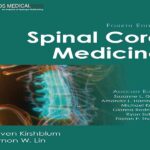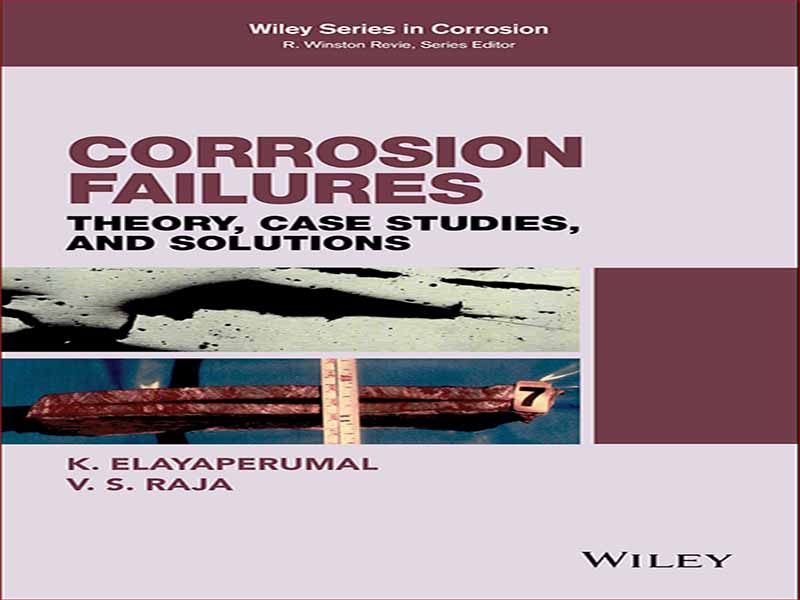- عنوان کتاب: CORROSION FAILURES – Theory, Case Studies, and Solutions
- نویسنده: K. Elayaperumal
- حوزه: خوردگی
- سال انتشار: 2015
- تعداد صفحه: 252
- زبان اصلی: انگلیسی
- نوع فایل: pdf
- حجم فایل: 3.76 مگابایت
خوردگی تقریباً تمام صنایع را تحت تأثیر قرار می دهد و اجزای خورده شده به طور پیش از موعد از کار می افتند و/یا در سطح پایین بهینه کار می کنند. بهره وری، ایمنی و محیط زیست را تحت تأثیر قرار می دهد و منابع طبیعی تجدیدناپذیر را می بلعد و بنابراین برای جامعه بسیار نگران کننده است. اگرچه اجزای صنعتی با مکانیسم های دیگری مانند اضافه بار مکانیکی، خستگی، خزش، شکستگی شکننده از کار می افتند، خوردگی بیشترین تخریب را ایجاد می کند که بیشترین آسیب را به تمام اجزای صنعتی وارد می کند. به عنوان مثال، در صنایع فرآوری شیمیایی، خوردگی مخازن تجهیزات فرآیند و لولهها، لولهها و اجزای تاسیساتی مرتبط مانند دیگها، مبدلهای حرارتی و کندانسورها، غالبترین مکانیسم آسیبزا در میان مکانیسمهایی است که قبلاً ذکر شد. خوردگی در سطح داخلی ظروف و سایر اجزا به دلیل اثر مواد شیمیایی فرآیند و همچنین در سطوح خارجی به دلیل رطوبت جوی مملو از بخارات شیمیایی و همچنین مواد عایق مرطوب رخ می دهد. از سوی دیگر، آسیب خوردگی در هوافضا و سایر صنایع حمل و نقل نسبتاً کمتر است، اگرچه در زندگی و ایمنی و هزینه قطعات بسیار مهم است. تخمین زده می شود که خوردگی باعث از دست رفتن حدود 3.5 درصد از تولید ناخالص ملی یک کشور می شود. از این رو، کنترل خوردگی به یک موضوع مهم علم و مهندسی تبدیل می شود. خوردگی یک موضوع چند رشته ای است که نیاز به درک بیشتر / همزمان از مفاهیم الکتروشیمیایی، علم مواد، به ویژه متالورژی و طراحی دارد. آموزش خوردگی نه تنها مستلزم درک صحیح این موضوعات است، بلکه درک بهتر مشکلات خوردگی واقعی که صنایع با آن مواجه می شوند نیز نیاز دارد. از سوی دیگر، مشکلات خوردگی صنعتی معمولاً توسط مهندسان مکانیک، مهندسین شیمی و در مواقعی مهندسان متالورژی حل میشود. چیزی که حل مسائل خوردگی در میدان را دشوار می کند این است که شرایط محیطی و عملیاتی معمولاً متنوع است و لیستی از بایدها و نبایدها وجود ندارد و همچنین معادلات ریاضی ساده ای وجود ندارد که بتواند خرابی ها را با این شرایط مرتبط کند که به تنهایی امکان پیش بینی شکست خوردگی در اکثریت قریب به اتفاق صنایع، از بین بردن چند نیروگاه هستهای و خطوط لوله حامل مواد خام و پتروشیمی که محیطهای آن به طور منطقی تعریف شده است، کنترل خوردگی در درجه اول ماهیت پدیدارشناختی دارد. بنابراین، کنترل خوردگی موثر توسط این مهندسان میدانی تنها در صورتی امکان پذیر است که بتوانند مفاهیم پیچیده الکتروشیمی و متالورژی را که بر فرآیندهای خوردگی حاکم است، درک کنند. اهداف اصلی این کتاب دو چیز است: دانشآموزان را قادر میسازد تا درک کنند که مفاهیم الکتروشیمی و متالورژی چگونه با خرابیهای خوردگی مرتبط هستند و مهندسان شاغل (درگیر در طراحی و ساخت قطعات صنعتی و کسانی که در کنترل فرآیند، بازرسی، دخیل هستند، و تعمیر و نگهداری) برای مقابله با مشکلات خوردگی از طریق ساده کردن مفاهیم الکتروشیمیایی و مکانیسم های خوردگی و قرار گرفتن در معرض متالورژی و روش تجزیه و تحلیل شکست و ابزارهای مربوطه مورد نیاز برای تجزیه و تحلیل. بنابراین این کتاب می تواند به عنوان کتاب درسی به همان اندازه که یک مرجع باشد. از این نظر، این کتاب منحصر به فرد و متفاوت از کتاب های معمولی متن و تحلیل شکست منتشر شده در موضوع خوردگی محسوب می شود.
Corrosion cuts across almost all industries, and the corroded components prematurely fail and/or operate at suboptimal level. It affects productivity, safety, and environments and devours nonrenewable natural resources and therefore is of great concern to society. Although industrial components do fail by other mechanisms such as mechanical overload, fatigue, creep, brittle fracture, corrosion remains the single most destruction causing the highest damage to all industrial components. For example, in chemical processing industries, corrosion of process equipment vessels and the associated piping, tubing, and utility components such as boilers, heat exchangers, and condensers is the most predominant damage-causing mechanism among the others mentioned earlier. Corrosion takes place on the inside surface of the vessels and other components because of the action of process chemicals and also on the outside surfaces because of the atmosphericmoisture laden with chemical vapors and also by wet insulation materials. On the other hand, corrosion damage in aerospace and other transportation industry is relatively less, though found to be critical in life and safety and in the cost of the components. It is estimated that corrosion causes loss of about 3.5% of GNP of a nation. Hence, corrosion control becomes an important subject of science and engineering. Corrosion is a multidisciplinary subject that calls for greater/concurrent understanding of electrochemical concepts,materials science, especially metallurgy and design. Teaching corrosion requires not only a sound understanding of these subjects but also better appreciation of actual corrosion problems that industries encounter. On the other hand, industrial corrosion problems are typically handled by mechanical engineers, chemical engineers, and at times metallurgical engineers. What makes solving corrosion problems on the field difficult is that environmental and operating conditions are usually diverse and there is no list of do’s and don’ts and nor there exist simple mathematical equations that could correlate the failures to these conditions that alone let the prediction of corrosion failures. In a vast majority of industries, baring a few nuclear power plants and pipelines carrying crude and petrochemicals where the environments are reasonably defined, controlling corrosion is primarily phenomenological in nature. Thus, effective corrosion control by these field engineers can be possible only if they can understand the complex concepts of electrochemistry and metallurgy that govern the corrosion processes. The main objectives of this book are twofold: enable the students to appreciate how the concepts of electrochemistry and metallurgy are intimately related to corrosion failures and empower the practicing engineers (involved in design and manufacturing of industrial components and those involved in process control, inspection, and maintenance) to tackle corrosion problems through simplifying electrochemical concepts and corrosion mechanisms and give exposure to metallurgy and failure analysis methodology and the relevant tools needed for the analysis. The book therefore can serve as text books as much as a reference one. In this sense, this book is considered unique and different from the normal text and failure analysis books published in the subject of corrosion.
این کتاب را میتوانید از لینک زیر بصورت رایگان دانلود کنید:
Download: CORROSION FAILURES – Theory, Case Studies, and Solutions





































نظرات کاربران